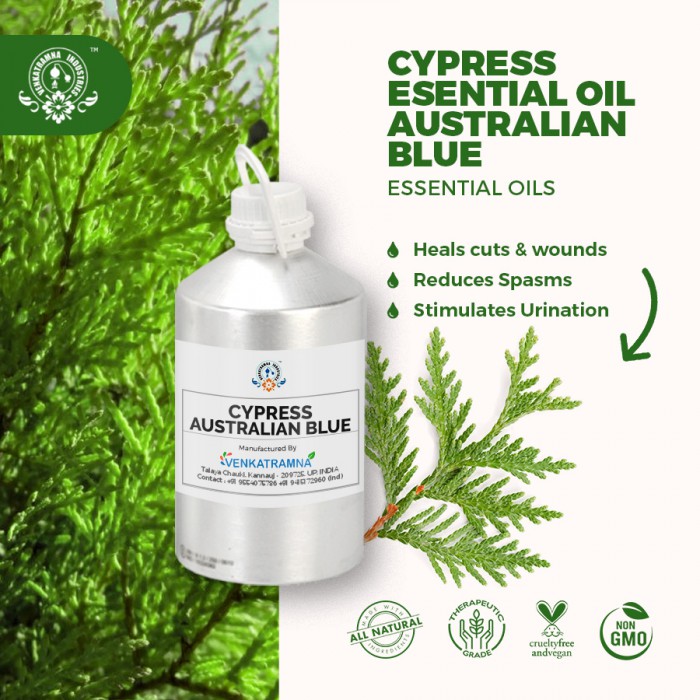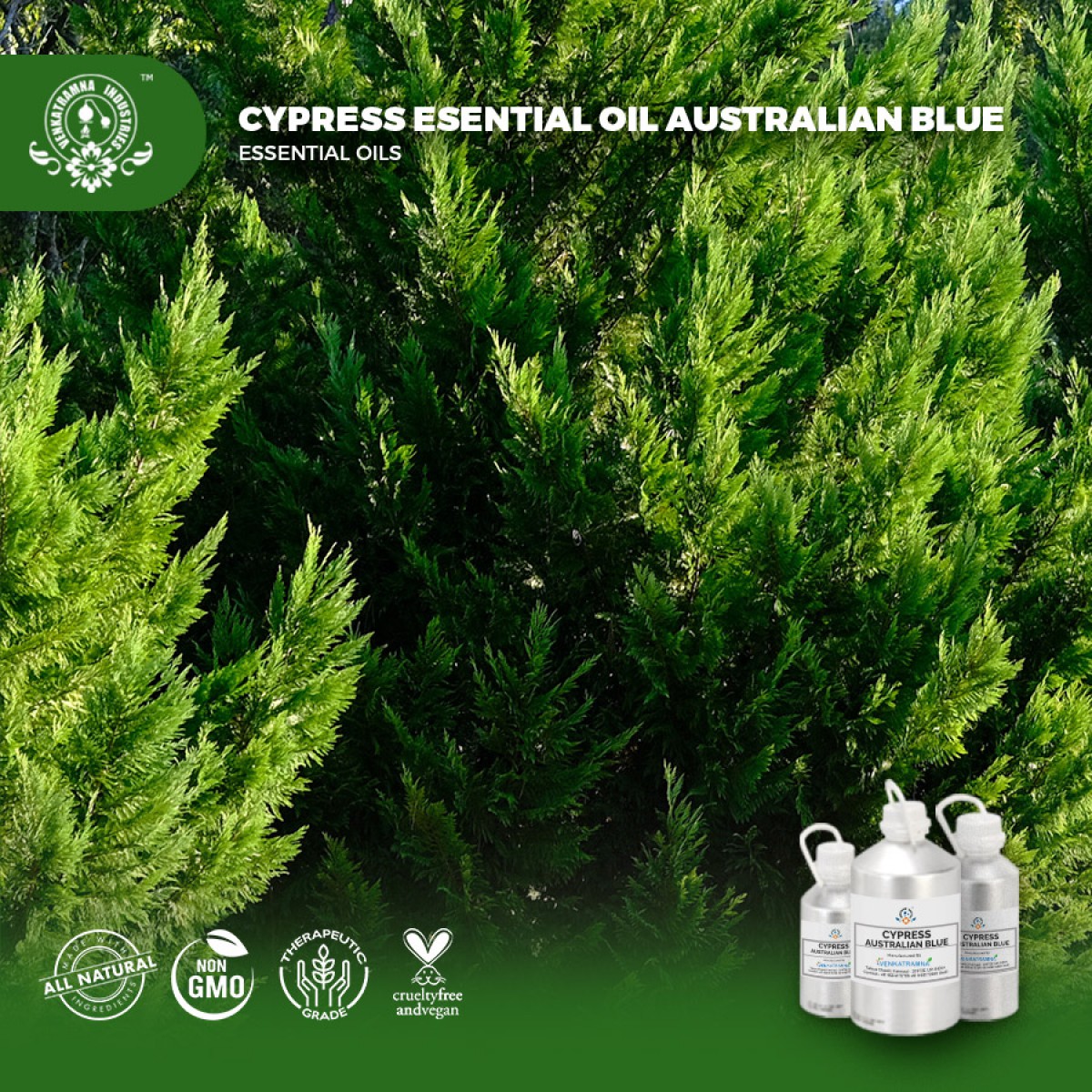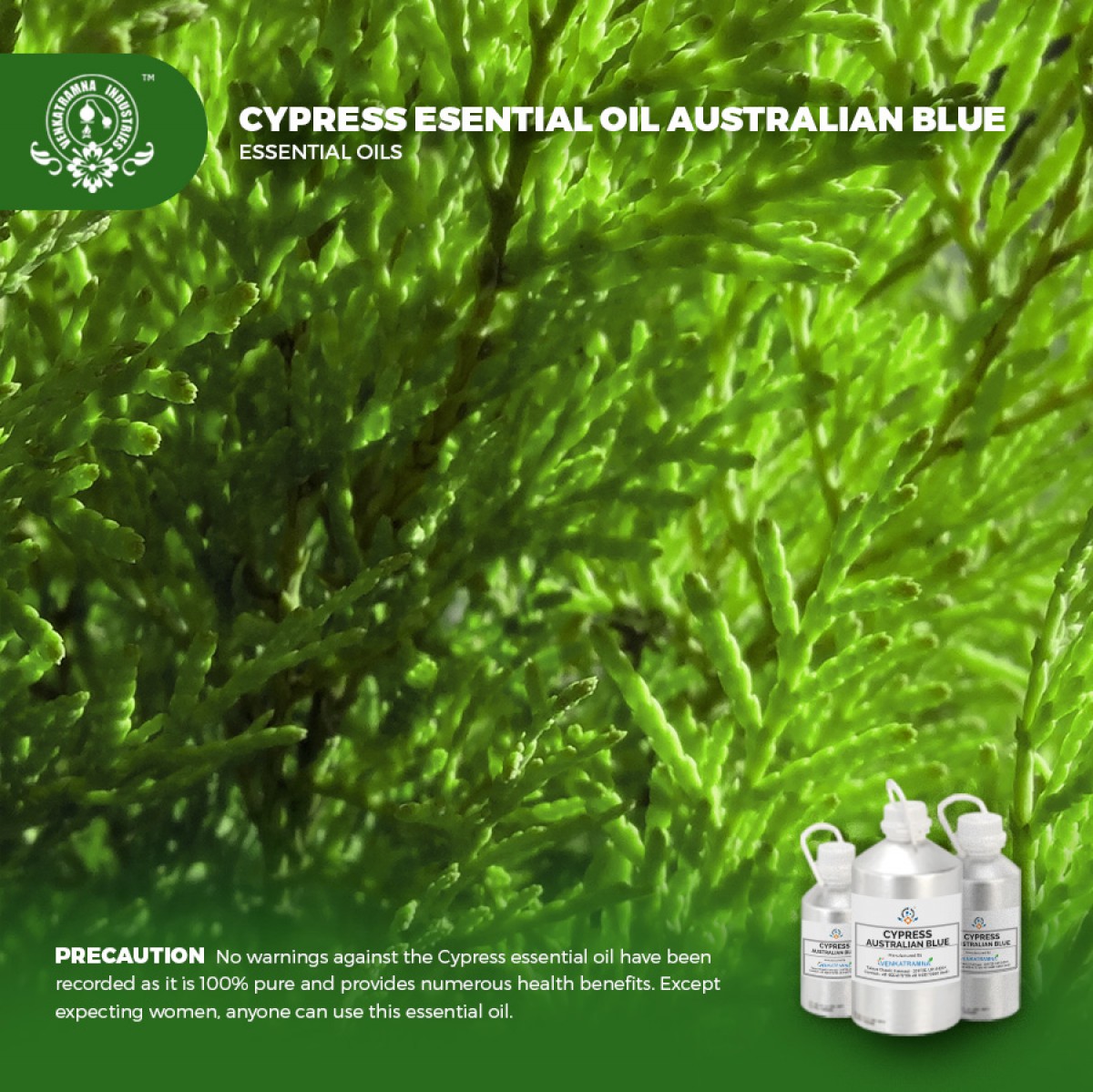Botanical Name: Callitris intratropica Common name: Cypress Pine, Blue cypress, Austra Read More
|
Botanical Name: |
Callitris intratropica |
|
Common name: |
Cypress Pine, Blue cypress, Australian Blue |
|
Plant family: |
Cupressaceae |
|
Genus: |
Callitris |
|
Appearance/Color: |
A heavy,
viscous, brilliant blue liquid |
|
Odor: |
Balsamic, spicy and sweet aroma |
|
Blends With: |
Clary Sage,
Bergamot, Marjoram, Rosemary, Lavender, Pine, Frankincense, Juniper and
Sandalwood essential oils. Conjointly, it is also compatible to be mixed with
Citrus fruits like Lemon, Lime and Orange. |
|
Origin: |
Australia |
Callitris intratropica is
an oil-bearing tree and has ethno-pharmacologically been used by the native
people of the Australian Northern Territory. Also, many folkloric health claims
have been made not much has been proven yet but often there is some truth to
it. The tree is as well grown in plantations and the remarkable blue oil also
called blue cypress oil is now commercially available. The blue color is due to
the presence of guaiazulene and chamazulene which is anti-inflammatory, but the
amount is rather low compared to blue chamomile and yarrow oil.
Callitris columellaris is widespread in warm temperate to tropical regions of Australia, often growing in areas with low rainfall, ranging from 150 - 750mm per year. It is not very frost hardy, with some forms able to tolerate occasional short-lived temperatures down to around -7°c, and can only be grown outdoors in areas with mild winters, generally growing well in Mediterranean climates such as southern Europe, northern Africa and California. Requires a sunny position, growing well in sandy, well-drained soils. Grows well near the coast. Tolerant of saline soils and, when established, of drought. Prefers a pH in the range 5.5 - 6.5, tolerating 5 - 7.5. Plants are highly flammable and so should not be planted near buildings in areas prone to bush fires. Plants are adapted to growing in regions subject to periodic bush fires - the seed is usually only released after a fire, germinating rapidly to re-occupy the site. A relatively slow-growing tree.
DISCLAIMER
The complete range of conditions
or methods of use are beyond our control therefore we do not assume any
responsibility and expressly disclaim any liability for any use of this
product. Information contained herein is believed to be true and accurate however,
all statements or suggestions are made without warranty, expressed or implied,
regarding accuracy of the information, the hazards connected with the use of
the material or the results to be obtained from the use thereof. Compliance
with all applicable federal, state, and local laws and local regulations
remains the responsibility of the user.
The FDA has not evaluated the
statements on this website. No claims are made by Venkatramna Industries as to
the medicinal value of any products from vriaroma.com or by us. The information
presented here is for educating our customers about the traditional uses of
essential oils and is not intended to diagnose, treat, cure, or prevent any
disease. You are responsible for understanding the safe application of these products.
If you have any questions, please call or email us for further information.
As per NAHA guidelines, New Directions Aromatics
(NDA) does not recommend the ingestion of essential oils. It is imperative to
consult a medical practitioner before using Essential Oils for therapeutic
purposes. Pregnant and nursing women and those taking prescription drugs are
especially advised not to use this product without the medical advice of a
physician. The oil should always be stored in an area that is inaccessible to
children, especially those under the age of 7.
Cypress essential oil has been
used for years for its aromatic and topical advantages. Due to its fresh and
clean aroma, it boosts the mind and energizes one’s senses. This powerful
essential oil is valued all around owing to its ability to combat respiratory
ailments and infections. It is also known in medical terms as a good agent to
remove toxins and relieves nervous system.
Cypress Emerald Essential Oil
in Pharma
A decoction of the inner bark is
used as a wash to relieve stomach cramps and to treat sores and cuts. The
decoction is also occasionally taken internally to relieve stomach cramps. The
leaves and twigs have been used in steam broths to treat colds and sores. The
wood ashes are mixed with water and smeared over the affected part of the body to
relieve minor aches and pains. A resin obtained from the stumps of felled trees
or the cut logs is used as a coating for pills. A high quality essential oil is
extracted from the heartwood. Called 'Australian blue cypress' oil in the
trade, it is used in perfumery, cosmetics and aromatherapy. The bark is burnt
in camp fires to repel insects. The bark contains 11 - 23% dry weight of tannin.
The heartwood is light brown in color with dark brown longitudinal streaks; the
sapwood varies from pale straw to pinkish tan. The grain is usually straight;
texture rather fine; lustrous; the odor is aromatic camphor-like; greasy feel.
The resinous wood is very durable, insect-resistant, brittle, very flammable,
hard, close grained. It seasons readily but because of low shrinkage is
customarily used in the green or partially dried condition; tends to check
around knots. It is fairly easy to work although there is some tearing of grain
around knots; dresses well to a smooth finish and takes a high polish; some
tendency to split when nailed. It is used for construction, furniture making,
cabinet making, fencing, ship building etc. The wood makes a good fuel, burning
well even when wet and releasing a pleasant smell that keeps insects away. It
can also be used to make charcoal.
Essence of Cypress Emerald
Essential Oil
Blue Cypress essential oil when
applied to topical creams and lotions can provide a number of benefits, in
particular for moisturizing and hydrating dry skin. One very good application
for this oil is in aftershave balms and creams.
It is also known to be an
effective treatment of atopic dermatitis, the most common type of eczema. Using
it together with your medication can help control flare ups and ease itchiness
and inflammation.
Often classified as spicy, warm,
balancing, smoky and honey like when describing it’s olfactory qualities it is
also very substantive and acts as a perfect base note with good fixative
properties, not too dissimilar to the functionality of sandalwood. It also
blends well with other woody notes like vetiver, citrus and green tones.
COMMON USAGE
·
Tightens muscles and loses skin
·
Heals cuts and wounds
·
Reduces spasms
·
Stimulates urination
·
Maintains blood flow
·
Strengthens respiratory system
·
Promotes sweating
·
Removes bad odor
·
Relieves anxiety and stress
·
Prevents excessive bleeding
Ingredients:
|
S.No |
Key Constituents |
Strength (%) |
|
|
Dihydrocolumellarin |
14.0 |
|
1 |
b-eudesmol |
14.4 |
|
2 |
g-eudesmol |
9.1 |
|
3 |
Guaiol |
13.7 |
|
4 |
a-eudesmol |
7.6 |
|
5 |
Guaiazulene |
6.2 |
|
6 |
chamazulene |
5.6 |
|
7 |
Columellarin |
2.9 |
|
8 |
Callitrin |
2.4 |
|
9 |
Cadalene |
2.3 |
TOXICOLOGICAL
INFORMATION
Safety Summary
·
Hazardous No Data
·
Contraindications Pregnancy, and severe medical
condition.
|
Information on toxicological effects |
|||
|
|
Acute Toxicity |
Acute toxicity: DELTA-3-CARENE (CAS: 13466-78-9) Oral route : LD50 = 4800 mg/kg |
|
|
|
Skin corrosion / irritation |
May cause irreversible damage to the skin; namely
inflammation of the skin or the formation of erythema and eschar or oedema following
exposure up to four hours. |
|
|
|
Serious eye damage / irritation |
No additional data available. |
|
|
|
Respiratory or skin sensitisation |
May cause an allergic reaction by skin
contact. |
|
|
|
Germ Cell Mutagenicity |
No additional data available. |
|
|
|
Carcinogenicity |
Monograph(s) from the IARC (International Agency for
Research on Cancer): CAS 5989-27-5 : IARC Group 3 : The agent is not
classifiable as to its carcinogenicity to humans. |
|
|
|
Reproductive toxicity |
No additional data available. |
|
|
|
STOT-single exposure |
No additional data available. |
|
|
|
STOT-repeated exposure |
No additional data available. |
|
|
|
Aspiration hazard |
May be fatal if swallowed and enters airways. Aspiration toxicity includes severe acute effects such
as chemical pneumonia, varying degrees of pulmonary injury or death following
aspiration. |
|
|
|
Photo-toxicity |
No additional data available. |
|
|
|
Other Information |
No additional data available. |
|
ECOLOGICAL
INFORMATION
·
Toxicity Very toxic to aquatic life with long
lasting effects. No aquatic toxicity data available for the substances. The
product must not be allowed to run into drains or waterways.
·
Persistence & degradability HYDROCARBONS
Biodegradability: no degradability data is available; the substance is
considered as not degrading quickly.
·
Bioaccumulation Potential No additional data
available.
·
Mobility in soil No additional data available.
·
Results of PBT and vPvB Assessment No additional
data available.





 MSDS-Cypress1.pdf
MSDS-Cypress1.pdf




